Top 10 Best Hypermodern Openings in Chess
This will apply for both black and white. This list was created by a hypermodern chess player himself and obviously a fanatic on chess. I wouldn't suggest any of these openings to the new new beginners until they begin to grasp and implement the opening principles when it comes to chess like occupying the center, developing pieces, and castling early. But occupying the center with pieces (for example fianchettoing bishops on long diagonals like in Nimzo Larsen or Owens defense) however instead with pawns is a very different case as it is too advanced for new new beginners who are just starting to learn the concepts behind chess like checkmating patterns and some few basic tactics like forks and skewers. So what I would suggest is to simply stick with some openings like Italian game or Scotch game or even a bit of Ruy Lopez despite being a very theoretical opening. Not only knowing a few openings obviously but rather knowing few checkmating patterns, tactics, and eventually practicing with various puzzles. Once you start to practice and get better, then you can deploy these hypermodern openings I have below when you feel comfortable at best or when you certainly know you're ready once you know and succeed with the theory behind it combined with tactics, precise positional play, and even imagination.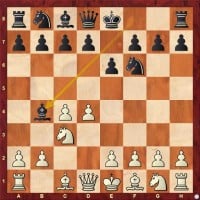
This is rather the greatest hypermodern opening of all and it is absolutely MY FAVORITE hypermodern opening when it comes to deploying Indian defenses against d4 as I adore Indian Defenses as one of my favorite and most played openings. The reason the Nimzo Indian defense is my favorite out of all on this list is because whenever I have a chance to deploy it after white plays 3. Nc3 which it is met with 3. Bb4, it gives me such enjoyable pleasure pressuring my opponent and doubling their pawns just right from the start of the opening phase. Not only it's splendid for positional chess when it comes to hypermodernism but rather it is rather flexible and fluid just like its successor Queens Indian Defense. Even though it will result of losing a bishop whereas white will have the bishop pair, trading a bishop for a knight (especially out of this opening) is worth it under the goal of undermining their center and obliterating them in the end. Which both of these openings are created by the father of hypermodernism himself, Aron Nimzowitsch. Though Hypermodernism was harshly criticised back in its day, people nonetheless through reform have played this opening and other fun hypermodern openings including notable grandmasters like Anatoly Karpov and Viktor Korchnoi (they hated each others guts back in those days).
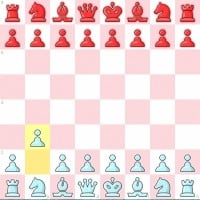
Behold! The weapon of great unorthodoxy and surprise, famously created and deployed with usual success by Danish Grandmaster Bent Larsen, honors Nimzowitsch's legacy when it comes to his hypermodern play, especially right out of the opening. Instead of playing Nf3 (Reti opening) on the first move, Larsen instead fianchettoes his queenside bishop very early on the first move on the 2nd move. It immediately pressures black's kingside. This opening is rather pure in its own way because of how it honors Nimzowitsch's ways of opening and how hypermodern this opening is, just like its brother, the Hungarian opening or Benko opening. It's very much like the Nimzo Larsen attack, except its fianchettoed bishop is deployed on its kingside on g3 instead of b3. I have used this a couple of times, and in all honesty, it seems that I have better results with the Nimzo Larsen attack than with the Benko opening. Though the Benko opening seems manageable as it can transpose to some interesting variations, and it'll make you castle quickly and develop rapidly. An example would be King's Indian Attack. Even though the Nimzo Larsen attack has a great reputation for its offbeat nature of an opening, including Larsen's playing style itself, it has some cons to take into consideration, like your queenside knight having trouble developing and slower kingside development. Nonetheless, many great chess players from the past and present have used it with great success, including Fischer and Nakamura. Not only is it a great weapon of unorthodoxy and surprise that shocks your opponents easily (depends), but it's also a great weapon in speed chess like bullet and blitz.
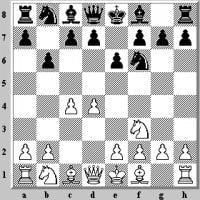
Simply one of my favorite openings from the Indian game (1.d4 Nf6) because of its fluidity, flexibility, and smoothness for a hypermodern opening/Indian defense. Like all other Indian defenses/hypermodern openings, it lets their opponent have the space advantage, which basically serves as the whole point of undermining the center. Despite that, it is said that it's quite difficult for black to gain an advantage from this opening. Nonetheless, this opening has had some pretty sweet success over the years ever since Nimzowitsch gave birth to this opening. Aside from Nimzowitsch's own fianchetto variation, there are also a couple of more variations of this opening named after former world champions, including Petrosian and Kasparov. The point of the Queen's Indian Defense is to fianchetto its queenside bishop to Bb7 so that it could not only pressure the knight and kingside from afar but also develop itself with great scope and diagonal across the board. This opening is the main reason why I love fianchettoed bishops SO MUCH!
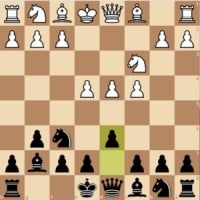
Ah, a classic hypermodern opening that's beyond iconic and recognisable. This is rather the best of all openings, honestly speaking from the heart. Sure, it has lots of theory and it's kinda complicated if you don't know parts of its theory. But its fame and recognition cannot be denied when it comes to famous GMs and super GMs playing it the most as their main weapon with the black pieces against d4 in the lines of the Indian game. Most iconic people who put it to great use is Bobby Fischer and Garry Kasparov. It's considered somewhat of an aggressive opening for black despite not occupying much space (the whole point) and it's obviously not for beginners to begin with. KID (King's Indian Defense) is considered a sharp opening much like the sicilian dragon as it can have double edged play just like Sicilian dragon. KID players usually blockade pawns to focus all their energy on attacking the kingside and checkmating their opponent whereas the opponent will try to attack the queenside. I used this opening on occasion, and it feels somewhat nice having casual games with this opening.
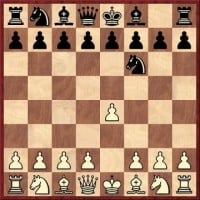
Very risky opening named after former world chess champion Alexander Alekhine who played it
at Budapest in 1921, scoring a win and a draw, and continued playing it during the 1920s. Which Alekhine, by the way, wasn't created by him. Rather it was popularised by him whereas there are several games that displayed the deployment of this tricky opening a century before Alekhine's time. Alekhine back at his time is considered to be a tactical monster on the board, and his games are nothing but breathtaking brilliancies. Some of his games are even instructive and easy to understand when it comes to attacking. But this unorthodox opening choice from black of playing Nf6 against e4 is something. This practically invites white to push e5 and gain tempo on the knight to a point the knight will be attacked over and over again, which it's basically the whole point of this opening to overextend white's pawns and its control of the center which black can later undermine it. This opening is clearly not for beginners because it simply breaks the most fundamental out of chess principles and that is moving the same piece twice or more in the opening. Even though, I used this opening quite frequently because it's one of the few opening choices I know of when I started playing chess. Even I started to think this is really a good opening because Bobby Fischer played it. But it was for a reason. It took me a few weeks to realize it's not a good opening for me because of the level of riskiness involved and how it has its cons for an opening. Nonetheless as I've taken experience for 5 months, I deployed it on several occasions. Particularly a favorite amongst my unorthodox opening repertoire.
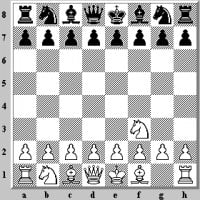
A very flexible hypermodern opening (simply putting the knight to Nf3) and a very useful one for white when it comes to prepping openings that your opponent somewhat may not be prepared of (sorta). So flexible it has multiple transpositions and variations white can play to (quite depends on what the opponents play I think). It can transpose to the English or even my favorite KID (King's Indian Attack). Or even the Reti gambit. It can transpose into many things rather. It's that flexible! Ofc this was named after Richard Reti, one of the leading pioneers of hypermodernism, and he was the one who deployed it for the very first time against legendary former world chess champion Jose Raul Capablanca in 1924, ending the classical-style superstar's eight-year, 63-game winning streak. The game alone and 1. Nf3 is mainly why the opening and the hypermodernism school became widely accepted. Richard Reti later achieved a sparkling brilliancy against Efim Bogoljubov the following year. Now I grasp furthermore why my best chess buddy loves to play this opening every now and then from a unique perspective.
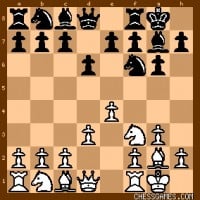
It is indeed a flexible opening just like the Reti opening. It's an opening that makes white castle quickly and fianchettoes his kingside bishop, which is the reverse of King's Indian defense. The KIA also refers to a plethora of systems for White involving pawns on d3, g3, and e4; knights on d2 and f3; a kingside fianchetto and kingside castling. This KIA setup can be used after 1.e4 against the Sicilian Defense, French Defense, Caro-Kann Defense, and many other popular openings for Black. White often plays for a kingside attack with Black trying to win on the queenside. Even though it's not a very theoretical opening, black has a lot of viable different options to respond to the opening, whereas black controls the center, and white does not put immediate pressure on black. The King's Indian Attack was first known to be played by Bonnerjee Mohishunder in his games with John Cochrane in Calcutta (Kolkata), India, in the 1850s, but did not become more widely popular until the 1920s. It wasn't until the 1960s that grandmasters started to deploy it with great success, including Pal Benko and Bobby Fischer. The many variations I see that can come up on both black and white's side just astonish me, and the system itself of KIA.
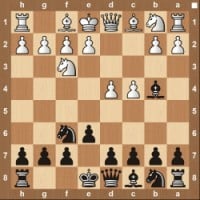
It sorta has a notorious reputation for being a drawish opening. Just like amongst the system of the Indian game black castles quickly on the kingside and fights for the center still indirectly with pieces instead of pawns traditionally (which basically serves the purpose of hypermodernism). Instead of going for Queen's Indian defense (3.b6) where black is expected to do a queenside fianchetto, black instead goes for Bb4+. Statistically speaking, it is a drawish opening simply because it produces more draws than wins. Sure, it is fairly simple to play and not very theoretical. And it is strategic and sound, but it's not a very sharp opening because white gets the bishop pair whereas black loses one of his bishops for a knight (really depends on what black plays). Therefore, it's the reason why Bogo-Indian defense is not a very sharp opening compared to Nimzo-Indian defense. Nimzo Indian defense doubles white's pawns (if white goes for crummy a3) whereas Bogo Indian defense does not. In terms of positional chess, it is just a waste of time. I once experimented with this opening once to simply construct my unorthodox opening repertoire couple of months ago. It was fun for a while until it turns out I did not have favorable results with it.
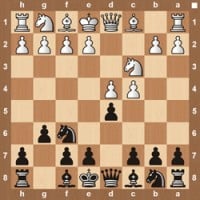
This opening, much like the King's Indian Defense, is highly popular and theoretical (I'm afraid). Instead of 3...Bg7, black instead plays d5, which confronts white in the center. White will typically control the center initially, while black aims to dismantle white's strong central position later on. It is an active and unbalancing defense, making it a great choice for defensive and positional players alike. The Grunfeld Defense is named after GM Ernst Grunfeld, a renowned opening theorist of his time. He began playing it in several games in 1922, including a win over Alexander Alekhine in Vienna (which apparently left enough of an impression on Alekhine that he tried it himself in the same tournament, only to lose in 26 moves). While it surprisingly performed poorly in the 1929 World Championship match between Alekhine and Euwe, it was primarily due to that particular event. Notably, even Garry Kasparov is a long-time practitioner of this opening, as are other grandmasters to this day. It was even featured and employed in Fischer's famous Game of the Century. I have personally used it a few times and achieved decent results. I focus on making solid developing moves in the opening to maximize the potential of the Grunfeld Defense.
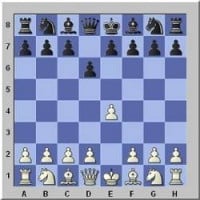
The reason why I put this opening at the last item is because it was deemed to be "too hypermodern" for me. Where I just felt like I'm not that much of a hypermodern player even though I play Nimzo Larsen attack and Benko's opening (Hungarian opening) time to time. It just seemed like too much theory for me at the time and ig I like controlling with black pieces than I do with white pieces with more space. 1.d6 is just a hypermodern way to respond to white's pawn to e4. Reminds me very much of the French defense when black plays e6. Instead, black plays d6. Even though this is not based too much on theory, it can be quite problematic for black if they are not prepared for it. Which may be another reason why I don't like the opening much and why it doesn't fit my style as I don't know much theory on it. However, since I watched a chess talk YouTube video about the Pirc defense most recently and that it convinced me completely how this is a powerful opening, I have big, excited plans to use this opening on important occasions soon. Though it seems like quite of a passive opening, it has its purpose to simply undermine black's center. The most annoying thing I could ever imagine when playing this opening is hyper aggressive mfs unleashing ferocious attacks. So my plan is to play the defensive role and easily provoke white. Not only aggressive players come to mind when countering the Pirc defense, but positional players can benefit from this opening by restricting black's gameplay. Though there are some very considerable cons when playing this opening, it's a very good opening for black as long as the player knows his theory and is prepared! Most Pirc players usually play the main line of 3.g6 to simply fianchetto its kingside bishop which will have a useful scope on its diagonal later on. But for me though, I am more interested of playing a more positional variation called the Czech defense to simply restrict one of white's knights. I played this opening... more